Kyoto Prefecture | The Well of Japanese Culture, Woven Over a Thousand Years
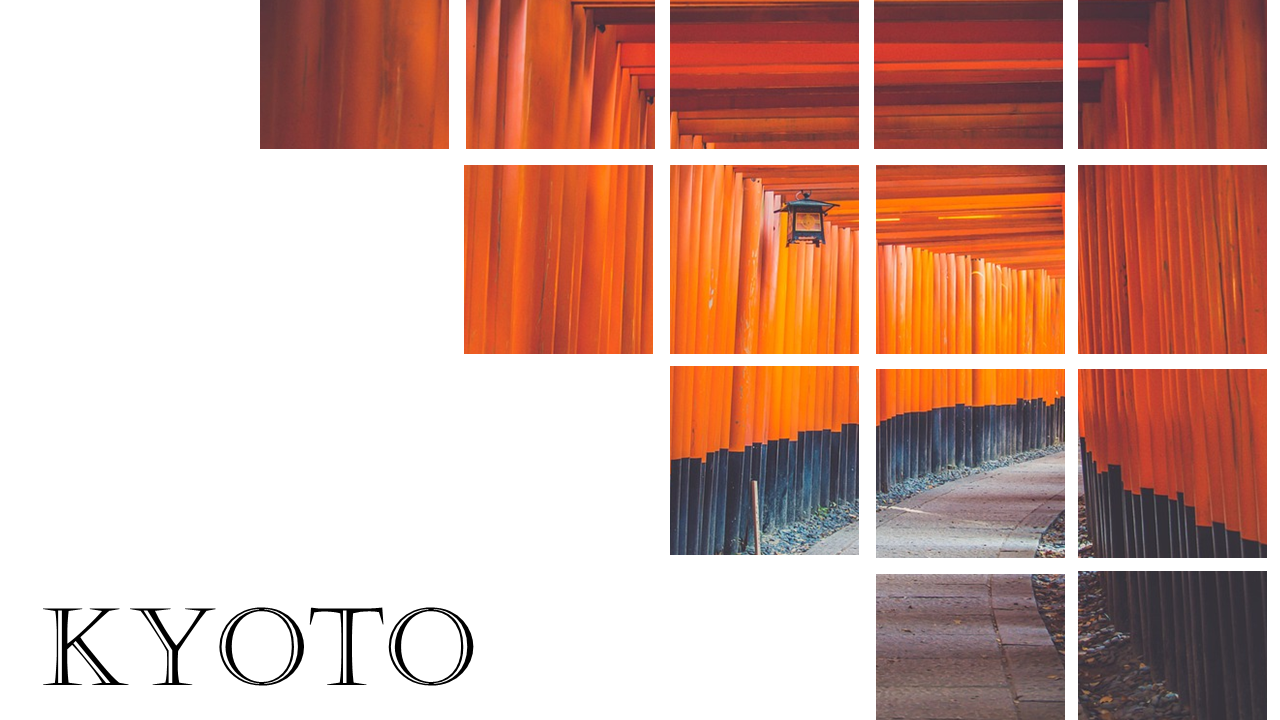
Kyoto Prefecture | The Well of Japanese Culture, Woven Over a Thousand Years
Kyoto Prefecture has flourished as the cultural and historical heart of Japan ever since the capital was moved to Heian-kyo in 794.
As a spiritual center of both Buddhism and Shinto, and a birthplace of literature, art, architecture, cuisine, and craftsmanship, Kyoto has shaped the very foundation of Japanese culture.
In the southern part of the prefecture, centered around Kyoto City, historic landmarks such as Kinkaku-ji (Golden Pavilion), Ginkaku-ji (Silver Pavilion), and Kiyomizu-dera Temple still stand today. These structures are more than tourist sites—they embody the Japanese sense of aesthetics and spiritual depth passed down through the ages.
Culture is not confined to museums or events; it is part of daily life. The presence of maiko (apprentice geisha), the ritual of tea ceremony, the charm of traditional wooden townhouses (kyō-machiya), and the elegance of Kyoto cuisine are all expressions of living tradition interwoven with everyday life.
In the northern Tango region, a distinct culture shaped by the Sea of Japan thrives through fishing communities and centuries-old weaving traditions. Across the prefecture, the sophistication of the city and the authenticity of the countryside coexist, creating a tapestry of cultural diversity.
Kyoto remains, even today, a wellspring of Japanese culture—a place where the spirit of a thousand years continues to breathe.
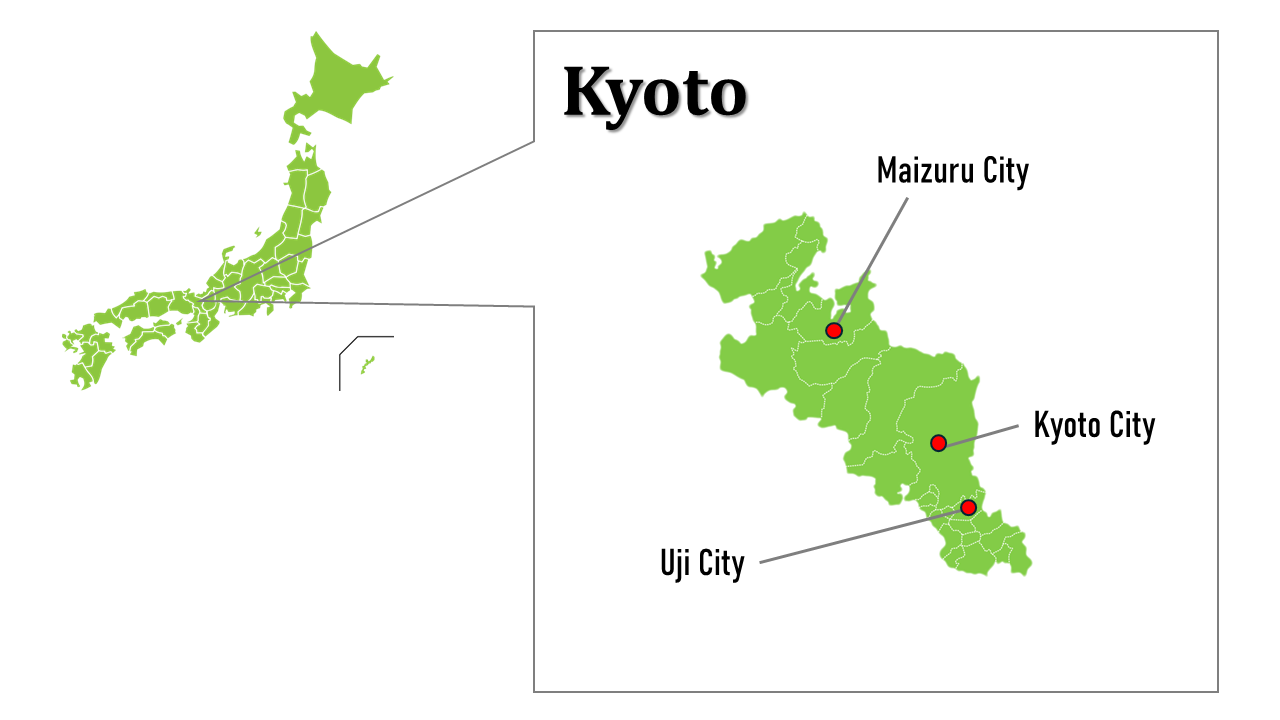
Prefectural capital
- Kyoto City
Major Cities
- Kyoto city
- Maizuru city
- Uji city
Population
- Approximately 2.6 million
Major Tourist Attractions and Events
- Kinkaku-ji (Golden Pavilion)
- Kiyomizu-dera (Kiyomizu Temple)
- Fushimi Inari Taisha (Fushimi Inari Shrine)
- Arashiyama (Arashiyama District)
Local Cuisine
- Yudōfu –simmered tofu
- Herring soba noodles
Craft Works
- Kyō-yūzen – Kyoto-style silk dyeing
- Nishijin woven textiles
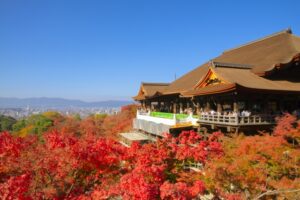
Kiyomizu-dera — A historic temple representing Kyoto, famous for its wooden stage offering spectacular views. A UNESCO World Heritage Site.
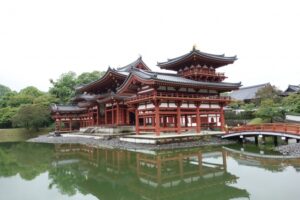
Byōdō-in Phoenix Hall, depicted on the 10-yen coin, is a representative example of Buddhist architecture from the Heian period.
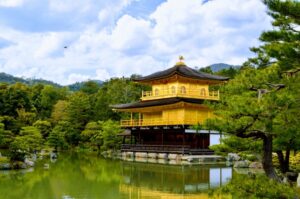
Kinkaku-ji, a UNESCO World Heritage Site in Kyoto, is known for its golden pavilion reflected beautifully in the surrounding pond.

Amanohashidate, counted among Japan’s Three Scenic Views, is a stunning sandbar stretching across Miyazu Bay.
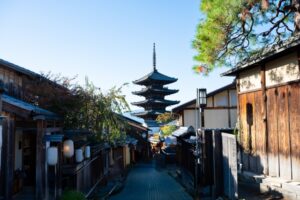
The area around Yasaka Pagoda in Kyoto is known for its traditional townhouses and represents the historic streetscape of the Higashiyama district.
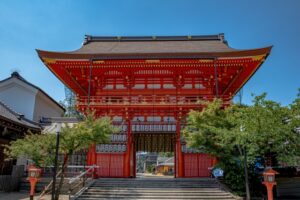
The South Gate of Yasaka Shrine in Kyoto, painted in bright vermilion, is a beloved symbol of the Gion district.
